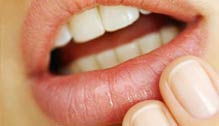Call it soda, call it pop. But sugary, carbonated beverages by any name are bad news for your child’s teeth. “One can of soda is the amount of sugar recommended for three days for a child,” Dr. Hayes says.
In fact, a February 2016 study in the Journal of the American Dental Association found a strong association between sugary drinks and poor dental health in teenagers. Researchers asked teens 14-19 in Mexico about how many sugary beverages they drank, then examined their teeth. They found 31.7% had tooth erosion, which means their enamel had been eaten away. The main culprit? Soda.
Be Picky About Sticky Snacks
If you’ve been under the impression that gummy or sticky fruit snacks are healthy alternatives, you’re not alone. Many parents are surprised to learn they are really closer to candy than fruit, especially when it comes to sugar. “Fruit rollups and other dried fruit snacks are like nature’s candy,” Dr. Shenkin says. “It is like candy, but in some respect it’s worse than candy because it sticks to teeth longer than things like milk chocolate, which is easier to wash away.”
Foods like raisins, which are often promoted as an all-natural snack option, can be troublesome. “The raisin is one of the worst foods because they’re so sticky and they actually adhere to teeth and stay there for an extended amount of time,” he says. “The sugar in that food is being consumed by the bacteria in our mouth during that time.”
To read the entire article visit MouthHealthy.org.
Westside Dentistry
Stephen J. Kimball, DMD
7181 Westwind Dr., Suite A
El Paso, TX 79912
(915) 581-1511
Westside-Dentistry.com
Stephen J. Kimball, DMD
7181 Westwind Dr., Suite A
El Paso, TX 79912
(915) 581-1511
Westside-Dentistry.com










